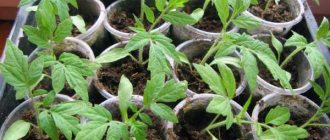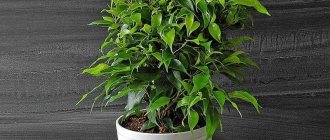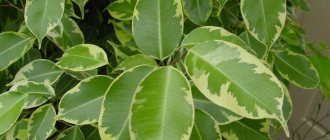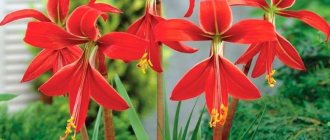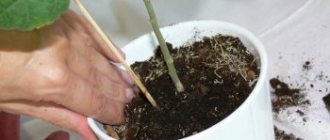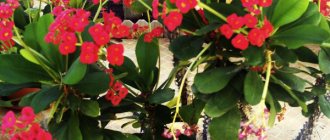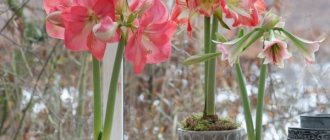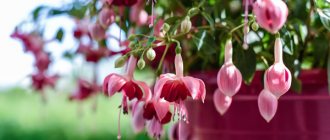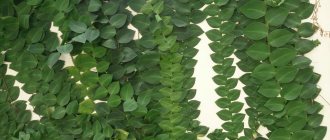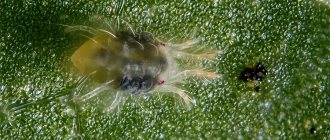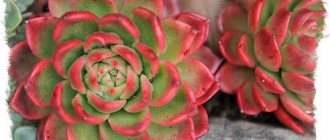How to choose a pot and soil
Many people are familiar with bonsai, but not everyone knows that in Chinese this word means “grown in a tray,” so there is no question of any deep pots. The container should be small, but equipped with drainage holes.
As for the soil, preference should be given to a light substrate that would freely allow both water and air to pass through.
It is best to use akadama, a red clay, for miniature trees. In the absence of one, you can buy a mixture for mulberry or palm trees at a flower shop.
Many gardeners prepare the soil themselves. It may consist of different components.
For example:
- Powdered clay, coarse river sand, fertile loam and peat chips are taken in equal proportions, and everything is mixed.
- Soil for ficus or palm trees (3 parts) is mixed with sand, vermiculite, perlite (1 part).
- Powdered clay (6 parts), leaf humus (1 part) and sand (3 parts) are also mixed together. Some people also add pine bark powder to this mass.
- Leaf humus (1 part), vermiculite or perlite (2 parts), expanded clay or pebbles (4 parts) and leaf soil (6 parts) will make a good base.
Important nuances
In order for your bonsai at home to look like the picture, you need to pay attention to some points.
They are as follows:
- Ficuses in nature often grow on stony soil and rocks, reaching with their roots to the narrowest crevices. You can do something similar at home. To do this, it is enough to create several aerial roots that will cling to massive stones.
- Before placing stones under the roots, they must be lubricated with a mixture of powdered clay and soil. This manipulation will allow the root system to “suck” to the cobblestones, imitating the natural habitat. It should be remembered that it will be much easier to catch on rough stones.
- Bansai formation must be done correctly. Wrapping Ficus Benjamin with wire is an unsuccessful option and will lead to the destruction of fragile shoots.
- There is no need to cover the root part of the plant with pebbles, soil, moss, etc.
Transfer
Ficus jinseng for bonsai requires frequent replanting and appropriate care.
Trees should be replanted every year for the first few years to ensure maximum development and ensure vigorous growth. When replanting, it is important to remove up to 30% of the surface roots to promote new growth at the surface of the trunk, thereby simulating a bedrock arrangement. Ficus prefers well-draining soils containing mainly sand and pebbles.
Once the bonsai is formed, repeat replanting every 2-3 years, in early spring until the growing season. Each time, select a larger pot that well complements the tree with a wide surface area of the earthen cover; it can later be covered with small stones that imitate a rock base. When replanting, be sure to cover the drainage with a piece of porous material or porous (loose) stones to trap dirt.
Once you have decided on the size of pot you need, you will need to find a good replacement soil. Any ficus prefers a drained mixture consisting mainly of sand. Cactus soil with some added sand mixtures works very well to fill the bulk of the plant's root system.
Remove the Ficus microcarp bonsai from the old container and trim off any excess surface roots to encourage further new growth. Start with the roots that grow downwards, because later they will simply push your bonsai out of this pot. Place the tree in a new pot and secure it with some bonsai wire. This will help maintain the original evenness (or the required angle of inclination) of the trunk when forming a new root system.
Add soil to required level. Remember - do not push or press down the soil, this can damage remaining roots or significantly slow down growth in compacted soil. Water the plant thoroughly, moistening the entire soil as much as possible, then place it in a shady area for the recovery period. Feeding after transplantation is not recommended during the first month; the plant must independently overcome the restoration of the root system.
Methods of forming bonsai
Forming a bonsai with your own hands is not difficult if you know certain rules and adhere to them.
Important! Bonsai is an entire art, so it is necessary to shape a tree by choosing a specific style and shape in advance.
Often, the ficus Benjamin, which can be found in any store, is taken as a basis, and a masterpiece is already made from it.
Namely:
- Moyogi. The rules for creating a tree of this type are simple. Considering that the trunk must bend in several places, you will need to take a couple of ropes and tie the base with them.
- Classic. If you want to make a Benjamin bonsai, but don’t have any special knowledge of how to do it, this method is perfect. In this case, the trunk of the tree should be smooth, and the crown should beautifully taper upward, resembling a pyramid. The bottom of the trunk remains bare.
- Yoseue. The formation of bonsai in this case is quite simple. 4-6 flowers are planted in one pot, which are turned into a kind of grove. If possible, plant trunks should have different thicknesses.
- Syakan. Growing a tree of this shape is very simple. The reason is that the trunk in this case should be strongly tilted in one direction, and the roots turned in the other.
- Sokan. Many, turning Ficus Benjamin into bonsai, confuse the previous technique with this one, although they are completely different. To shape the sokan, you will need to wait until the trunk bifurcates into two unequal parts. Considering that they may have to wait quite a long time for the “baby,” many simply plant a second flower, thus solving a difficult problem.
- Hokidachi. This is an unusual shape that resembles a broom. When creating such a tree, it is important to pay attention to the symmetry of the branches diverging to the sides from the trunk.
Regardless of what shape was chosen, the formed flower will look incredibly beautiful, because it was made by hand.
How to grow a bonsai from a ficus
Many people believe that growing ficus bonsai is a very difficult task. In fact, by doing everything step by step, you will be able to achieve your goal without any problems.
Growing bonsai consists of the following points:
- In trimming. Some experienced gardeners immediately begin by saying: “Take a few small cuttings from the top of the plant, and then treat the cut areas with charcoal.” And this will be a true statement and the initial stage. Next, you will need to dry these cuttings and place them in a solution of a root formation stimulator or simply in water.
- In temperature. Without the proper temperature, no ficus bonsai will grow. The ideal option would be a mark on the thermometer of +25 ºС..+27ºС. Don't forget about good lighting.
- In choosing a container. No need to choose a large container. Having found a suitable container, you will need to lay material in the form of a mesh with small cells on the bottom, and pour coarse river sand (no more than 0.5 cm) and a couple of centimeters of soil on top.
- In landing. The plant is carefully placed in the substrate, and small stones are placed under the roots. The end result should be a small mound. In this case, it is important to ensure that the substrate does not reach the top edge of the pot. As for the root collar, it should be placed at the same level with the ground.
- In watering. When making a ficus benjamina bonsai with your own hands, it is important not to forget to water the plant. The first time the manipulation should be carried out half an hour after the transplant, and later - as necessary.
- In decoration. By planting several cuttings in one container, in the early stages they can be intertwined with each other.
Important! Weaving will not negatively affect the flower!
- First you will need to use ropes. When the trunk becomes woody, they can be removed.
- In creating beautiful roots. After the flowers have rooted, usually after 3-4 months, you will need to rake the substrate from the roots. Such manipulation does not harm the ficus at all, so you don’t have to worry about it.
- In crown formation. After six months, you can form a bonsai. To do this you will need to pinch the top.
- In decor. In order to decorate the pot and the plant itself, you can and even should use colored pebbles, moss, and some unusual stones. True, you shouldn’t get too carried away, otherwise the ficus won’t be visible because of all this tinsel.
As for how to make a bonsai from ficus benjamina, it has been partially described. Partly because it is important to be aware of pruning, which is a key point in the creation of a "Japanese tree".
Despite the average degree of difficulty in caring for ficus, it is very easy to shape. Having some ideas about the physiological characteristics of Ficus Benjamin, you can grow almost anything from it.
This plant feels great both alone and next to its fellows. By planting several ficuses in one pot and cutting off the tops, you get a bush that is compact in height, but quite lush. The thing is that ficus tends to quickly grow leaf mass, and pruning stimulates the awakening of dormant buds below the cuts, from which side shoots grow.
A single plant resembles a single-trunked tree in appearance. The thick trunk of an “indoor tree” looks much more harmonious, the length of a thin stick. The thickening of the central shoot occurs faster while the lower lateral shoots grow on it. Therefore, during standard forming, when the result should be an even, without side branches, trunk with a decorative part of the crown of a weeping, spherical or umbrella shape, the lower branches, at the forming stage, are removed as late as possible.
Before reaching the age of three, the branches of a ficus do not completely become woody, that is, they remain soft and flexible, and with constant contact with each other, they can grow together. This feature of the development of Ficus Benjamin is used to give the trunk of a standard tree the required thickness and texture by planting 2-3 plants of approximately equal growth strength in one pot and intertwining their trunks into a braid or plait. As they grow, the trunks grow together and form beautiful growths.
Also, the stems of ficus trees can be fused into a column, a flat or three-dimensional lattice, or allowed to grow in an arc, thus obtaining a twisted spiral.
Japanese bonsai style formation
In my opinion, the most interesting way to form Ficus Benjamin is in the Japanese bonsai style.
This particular tree is more than two and a half years old. At the time of purchase it was a small bush consisting of 3-year-old seedlings. After a month-long adaptation period, the bush was transplanted from the transport pot into a slightly larger diameter and shallower pot with soil for ficuses. At the same time, the old soil was removed, and the plants were planted as close to each other as possible. This plant survived root pruning.
Three months after the transplant, the process of merging the stems began. The lower side shoots were removed, and I intertwined the central ones with each other, cutting off the bark pointwise at the places of supposed splicing and secured the interweaving with electrical tape, with the sticky layer facing out. Next, I cared for the ficus as usual, making sure that the electrical tape did not cut into the trunk. Once I had to cut it off and screw on a new one, slightly loosening the fastening. After 3-4 months, the trunks, in the places where the bark was cut, grew together safely, and it was possible to proceed to the next stage of bonsai formation.
Crown trimming
Now this plant needs crown pruning. I'm interested in pruning the top branches.
I don't use special tools to trim bonsai. I use improvised products from the nearest store. These are small scissors for thin branches, large scissors or pruning shears for thick branches, an alcohol solution for treating the tool blade, water to remove alcohol from the surface of the blades, rubber gloves to protect against poisonous milky sap, “Garden var” for processing large sections of thick branches . The pruning tool should be sharp so as to cause less damage to the plant.
It is recommended to start pruning from the bottom. But I won’t cut off the lower branches yet, I’ll just trim them slightly for preventive purposes. When pruning, you need to ensure that at least 3-4 leaves remain on the branch so that the branch does not dry out. In addition, it is recommended to trim the branch at a height of approximately 1 cm from the previous leaf. Dried branches are also removed.
This is what the tree turned out to look like after pruning. Of course, some branches still stand out from the general concept. But you can’t achieve a beautiful appearance with just pruning; for this, various tricks are used, which will be discussed below.
Now all that remains is to spray the plant and send it to the place where it is permanently located.
Transplantation with root pruning
A month has passed since the crown was trimmed. The plant survived the pruning well: it began to grow, grows new leaves and sends out new shoots.
It is worth noting that the formation of ficus at home affects not only crown pruning. Very often, the roots of ficus trees, especially old ones, come out of the pot. They can even fly the potty or get entangled with each other. This impairs their nutrition. Therefore, such plants need annual replanting or root pruning.
And in the case of bonsai, this is a vital necessity, since the tree grows in a small and shallow pot. According to fairly strict canons that regulate everything related to the art of bonsai, the height of the bowl should be no more than the thickness of the tree trunk.
Before transplanting, it is advisable not to water the plant for several days so that the soil has time to dry. Transplantation begins with cutting the fastening wire.
Next, using a flat spatula or a knife with a wide blade, the soil along the edges is separated from the walls of the pot. After this, the plant can be removed quite easily.
My plant is heavily entwined with the earthen ball. This indicates his good development.
I haven't used a real ceramic bowl yet. The pot I have is not expensive, Chinese, but quite durable, with good drainage holes, so there is no need to use special mesh. There are also additional holes for fastening wire and legs.
There are 2 ways to replant a bonsai, depending on the goal that needs to be achieved. The method of transshipment with slight trimming of the edges of the roots along with a ball of earth is used when you need to place the plant in the same or slightly larger pot. A radical replanting, with complete or almost complete clearing of the roots from the old soil and pruning them, is necessary if the composition of the soil is changed or the tree is transplanted into a smaller bowl.
Now my pre-bonsai is growing in a mixture of ficus soil with perlite. I’m going to gradually accustom him to clay, so I choose the second method of transplantation. Someone cleans the soil by soaking the plant in water. I prefer to do it dry.
One of the features of Ficus Benjamin is its root system. The plant has two types of roots: thick - tap roots and thin - fibrous. Roots play a very important role in the life of a plant. They anchor the plant in the soil and ensure the absorption and conduction of water with dissolved minerals to the stem and leaves. Powerful taproots, as a rule, grow in depth, while fibrous roots grow in breadth. Tap roots can be pruned. Thus, redistributing growth energy in favor of fibrous roots. And while they are young and soft, they can be bent, directed in different directions, thus ensuring that the bonsai is planted in a shallow container.
Ficus trees also tolerate exposed roots well, which bonsai masters use to create the so-called nibari, that is, roots growing on the surface of the soil to visually give the tree age.
The roots are trimmed with a sharp, disinfected instrument. When pruning, it is advisable to use gloves because of the milky sap.
The pruning itself should not cause any difficulties. It is necessary to decide in advance which roots will be cut. I will cut off the lower fibrous roots, which grow downwards and do not branch, since the drastic pruning of the taproots was done last year, and now it is not necessary, the plant fits in the pot anyway. After pruning, you can begin planting.
Immediately before planting, we check whether the root system fits into the bowl.
To ensure that the bonsai does not run away from the bowl after transplantation, it must be attached. I use garden wire to tie up plants. It comes in different diameters. I chose one that fits easily into the mounting holes.
We put a thin layer of expanded clay on the bottom. It provides good drainage, stops the soil and prevents it from spilling through the drainage holes.
Next, you need to decide on the substrate for planting the plant. The best soil for deciduous bonsai is “Akadama” - baked clay, which is mined in one area of Japan. It is in this that all deciduous indoor bonsai are planted. This soil is inorganic. It does not contain any nutrients and is used in combination with a special fertilizer. This is done in order to slow down the growth of an already mature tree.
But I selected a slightly different soil mixture for my plant. As an organic component of the substrate, I will use soil for ficuses, which contains peat, river sand, perlite and organic fertilizers.
Seramis for cacti and succulents is suitable as an inorganic component. It consists of granules of baked clay and lava, which absorb moisture in large quantities and gradually release it to the plant, which allows you to reduce the frequency of watering by 3 times.
I will mix the soils 1:1, after first pouring a small layer of “Ceramis” on top of the expanded clay. Next, I pour a little mixture, install it in the plant, distribute the roots throughout the pot and secure them with wire. Pour the prepared substrate on top again.
Planting was done in dry soil, now the plant needs to be watered.
I also want to decorate the pot a little and plant moss on top. Moss looks very beautiful in combination with bonsai bowls.
There is a separate article on our website dedicated to growing moss at home. Read the article
Moss needs to be replanted in moist soil. Gently collect it with a spatula, chop it and distribute it evenly over the surface of the pot. Moss lives well at home, especially with daily spraying. Moss reproduces by spores, so when it is crushed, there is no particular harm to the root system.
After planting the moss, we compact it slightly, you can sprinkle it with water and cover it with dry soil on top.
To be continued…
We recommend reading: - Ficus Benjamin for "dummies" - Ficus Benjamin for "amateurs" - Ficus Benjamin for "pros". Bonsai care
Methods for pruning ficus
Usually the procedure begins with aerial roots, giving them the proper appearance. To create a lush crown, you need to regularly trim the main trunk. This leads to the fact that it increases in diameter, and the crown, in turn, becomes wider.
Important! Formation begins only when the trunk is thick and strong enough.
Taking into account the fact that ficus quickly “grows” leaves, pruning should be done at least once every six months. Branches on which up to 10 new leaves have appeared are shortened so that ultimately no more than 4 leaf blades remain. Trim the tree starting from the bottom. The juice that appears in the cut areas is not rubbed with anything.
The mistake of many is that they cut off only the leaf plates. The tree grows, new branches appear, but there is no bonsai as such, because gardeners have created a “naked” plant, and not a masterpiece.
If there is too much green mass, you can remove it a little, but only in early spring. Until autumn, only minor adjustments should be made aimed at maintaining the shape of the tree. From October to March, the flower is not touched, because at this time it enters the dormant stage.
As for the shape of the trunk, creating the desired one will not be difficult. Experienced gardeners recommend using twine, which can be used to tie the necessary branches to the base.
As already mentioned, wire is a bad option. However, if you can’t find anything else, then you will need to take the thinnest one and put some soft fabric under it.
Wrapping after transplantation should not be done earlier than 4 weeks later. After this period has expired, you can begin manipulation. To do this, you will need to strictly move from bottom to top. After 1.5-2 months, when it is possible to obtain the desired shape, it is necessary to cut the wire.
Important points about caring for ficus bonsai
A ficus is a ficus, and a ficus bonsai is a bonsai, so care for it at home should be appropriate.
The flower loves light, high humidity and regular feeding, so it is worth providing it with all this.
Some believe that 8 hours of daylight will be enough for the plant. In fact, in winter the best option is 12 hours, and in summer all 16. Do not forget that ficus is a tropical flower, so the conditions must be appropriate.
If you want to know how to grow a bonsai into a large and beautiful plant, you should be careful about caring for the flower.
In addition to light, the ficus needs to be provided with “its” place, and choose a zone in which it would always be. This is due to the fact that the flower does not tolerate rearrangements; it reacts very sharply to them, shedding its foliage.
Accommodation
Ficus benjamina bonsai grows in well-lit areas without direct sunlight. Place the tree in a room that is fairly humid, such as the kitchen. Ficus plants generally grow slower than deciduous houseplants and appear less vibrant when grown and kept in dry areas.
Initially, Ficus Benjamin comes from areas where it rains continuously, that is, jungles with high humidity. Kitchen windows, a bathroom shelf, or any other area that has higher humidity is ideal for these types of bonsai.
If you cannot provide these conditions, consider using a spray bottle to provide the tree with the moisture it needs by spraying water directly onto the plant several times a day. This will help maintain high humidity in the bonsai location and allow the ficus to fully develop.
This type of tree requires bright, indirect sunlight throughout the day. It is very important that the bonsai tree is shaded from direct midday sun or other sources of thermal radiation (oven, oven, heater, convector). If you cannot avoid direct exposure to sunlight, you will need to turn the pot with the plant very often, periodically spraying it with water.
The plant will feel very comfortable outdoors. The main thing is not to forget to return it to a warm room before the onset of the first cold weather and especially frosts.
